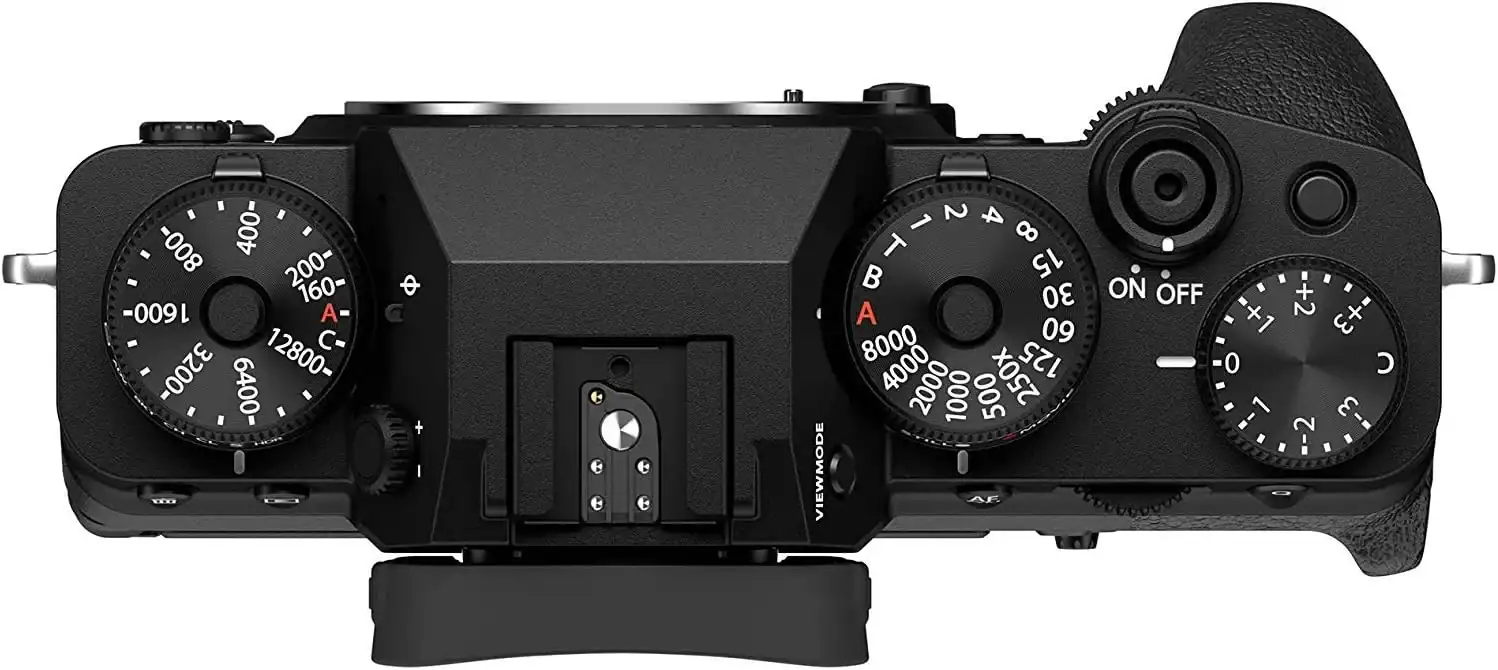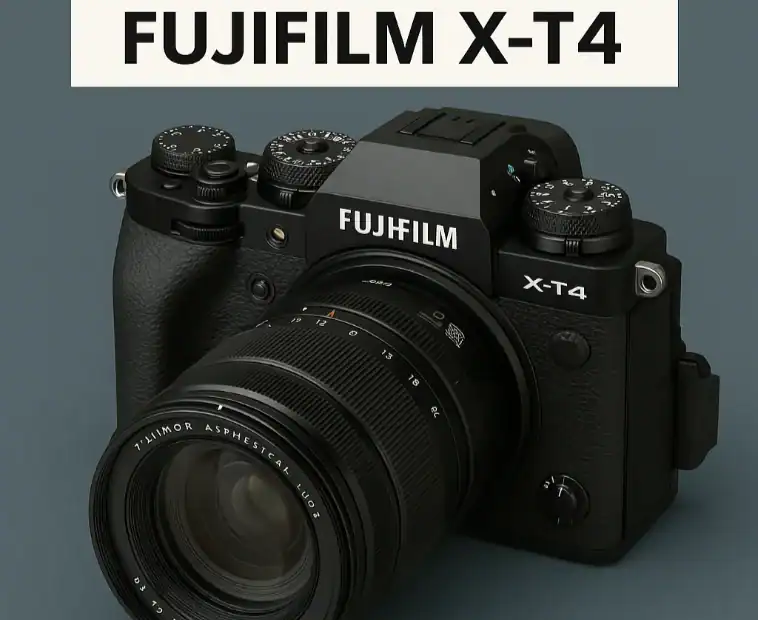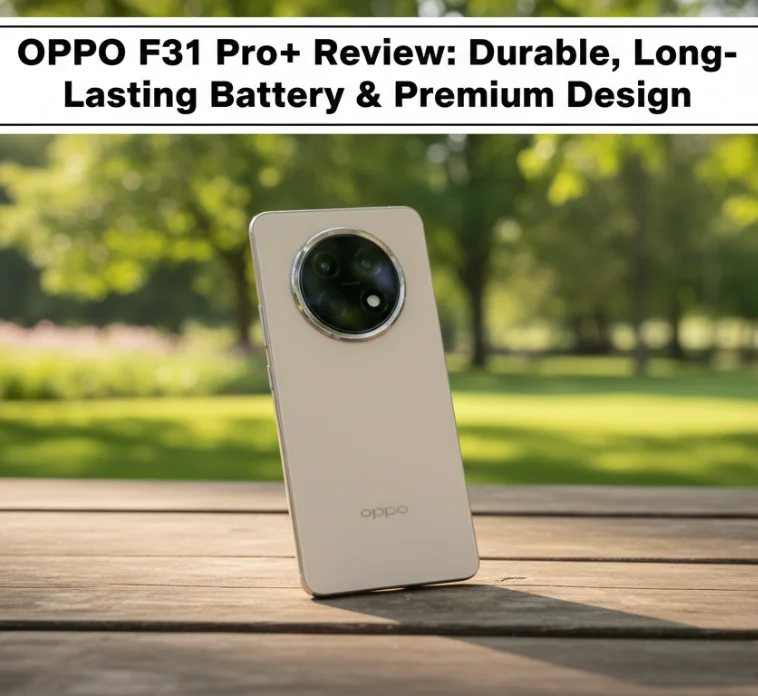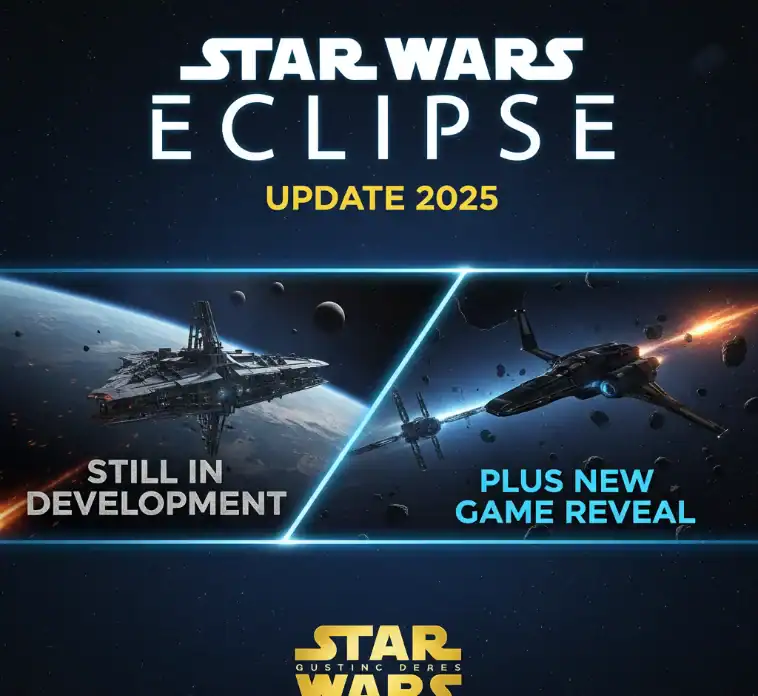The Fujifilm X-T4 is a remarkable camera. It works for both photographers and videographers. This APS-C mirrorless camera is a true hybrid machine. It builds on the success of its famous predecessor. The Fujifilm X-T3 was a very capable camera. The X-T4 adds key features. It brings in-body image stabilization (IBIS). It has a much larger battery. The autofocus is improved. And the shooting speeds are faster.
Fujifilm calls the Fuji XT4 a sister model to the X-T3. It is not a direct replacement. This makes sense when you see the specs. It stands out against the XT3 and the older X-H1.
We will cover its performance, image quality, and video power. We will also compare it to the Fujifilm X-T3 and the newer Fujifilm XT5. Is this the right camera for you? Let’s find out.
Key Features at a Glance
The Fujifilm X-T4 is packed with technology. Here are its most important specifications.
- Sensor: 26MP BSI CMOS sensor
- Stabilization: In-body image stabilization (IBIS)
- IBIS Power: Up to 6.5 stops of correction
- Shooting Speed: 20 fps with electronic shutter
- Mechanical Shutter: New, quiet shutter at 15 fps
- Screen: Fully articulated rear touchscreen
- Storage: Dual UHS-II card slots
- Charging: USB-C with USB PD charging
- Film Modes: 12 Film Simulations, including Eterna Bleach Bypass
Design and Handling: Classic Feel, Modern Flexibility

It has Fujifilm’s signature retro design. The top plate features dedicated dials. It makes shooting feel intentional and engaging.
The biggest change in design is the screen. The Fujifilm X-T3 had a 3-way tilting screen. This is often called a “vari-angle” screen. It flips out to the side and can face forward. This is a huge benefit for videographers and vloggers. It also helps with taking photos at very high or low angles. The extra size improves the grip. It feels more secure and balanced, especially with larger lenses.
In-Body Image Stabilization (IBIS): A Game Changer
The most significant upgrade in the Fuji XT4 is IBIS. This was a feature missing from the entire X-T series until now. The IBIS unit is compact and effective. It provides up to 6.5 stops of stabilization.
What does this mean for you?
- Sharper Photos: You can shoot at much slower shutter speeds handheld. This is perfect for low-light situations. You won’t need to raise your ISO as high. This results in cleaner images with less noise.
- Smoother Video: Handheld video footage is much more stable. It looks smooth and professional. You can leave your gimbal at home for many types of shots.
- Works with Any Lens: The IBIS works with every lens you mount. This includes prime lenses that do not have optical stabilization.
This one feature makes the Fujifilm X-T4 a much more versatile camera than the X-T3.
Performance and Autofocus
Speed is another area where the Fujifilm X-T4 excels. It can shoot at an impressive 15 fps. This is one of the fastest mechanical shutters in any mirrorless camera.
The autofocus system is also improved. The Fuji XT4 uses updated algorithms. This makes it better at tracking faces and eyes. The focus is quick and reliable for most situations.
Is the autofocus perfect? It isn’t cutting-edge. Some high-end competitors may have slightly more tenacious tracking for very fast sports. However, for the vast majority of users, the AF in the XT4 Fuji is more than capable.
Image and Video Quality: The Fujifilm Magic
The Fujifilm X-T4 uses the excellent sensor found in the Fujifilm XT3. The image quality is simply stunning. Photos are sharp, detailed, and have fantastic color.
A major reason people buy Fujifilm is for the color science. The famous Film Simulations are included. These modes replicate the look of classic Fuji film stocks. You can get beautiful JPEGs straight out of the camera.
On the video front, the Fujifilm X-T4 is a beast.
- It records 4K video at up to 60 frames per second.
- It has a much longer battery life.
- It has a fully articulated screen for vlogging or video.
Fujifilm X-T4 vs. X-T3: When to Stick with the X-T3
The Fujifilm X-T3 is still an excellent camera. You might consider sticking with the X-T3 if:
- You primarily shoot with a tripod.
- You do not need IBIS.
- You prefer the 3-way tilting screen for photography.
Fujifilm X-T4 vs. X-T5: The Hybrid vs. The Specialist
The Fujifilm X-T5 is a more photography-focused camera. Consider the X-T5 if you want:
- A new 40MP sensor for higher resolution images.
- Improved subject-detection autofocus.
- A return to a 3-way tilting screen, which some photographers prefer.
- A slightly smaller and lighter body.
The Fujifilm X-T4 remains a better choice for:
- Users who want more balanced video recording options without overheating concerns.
- Those who do not need the massive 40MP files of the Fujifilm XT5.
Verdict: The X-T5 is more of a photography-first camera.
Frequently Asked Questions
What is the Fujifilm X-T4 price?
Is the Fujifilm X-T4 good for beginners?
Does the Fujifilm X-T4 have image stabilization?
Is the Fujifilm X-T4 still a good buy today?
Should I buy the X-T4 or the X-T3?
Diving Deeper: Battery Life and Power Management
Let’s talk more about the battery. This was a major point of focus for the Fujifilm X-T4. The camera introduces the new NP-W235 battery. This battery is much larger than the one in the Fujifilm X-T3. The result is a huge improvement in shooting endurance.
Fujifilm rates the battery for about 500 shots per charge. In real-world use, you can often get more. This is in “Normal” mode. There is also an “Economy” mode to stretch it even further. This change makes the Fuji XT4 a more reliable camera for long days. You can shoot a wedding or a full day of travel with more confidence. You won’t need to carry as many spare batteries as you did with the XT3.
Another excellent feature is USB-C charging. This is incredibly convenient. The camera also supports USB Power Delivery (PD). This means you can power the camera and shoot while it’s plugged in. This is a fantastic feature for studio work or long video recordings.
The Viewing Experience: A Superb EVF and Versatile Screen
Using the Fujifilm X-T4 is a joy for your eyes. It has a brilliant electronic viewfinder (EVF). The EVF is a 3.68M-dot OLED panel. It is large, bright, and incredibly sharp. The EVF also has a fast refresh rate of up to 100 fps in Boost mode. This makes tracking moving subjects very smooth. There is almost no lag. This helps you feel connected to the scene you are shooting. This high-quality EVF is a big part of what makes the X-T4 feel like a premium camera.
We mentioned the fully articulated screen earlier. Let’s explore its benefits.
- For Videographers: The screen can face forward. This is essential for vlogging or filming yourself. You can frame your shot perfectly.
- For Photographers: It helps capture creative angles. You can shoot from way down low or high above your head.
- For Protection: You can flip the screen inward to protect it. This is great when the camera is in your bag.
The Soul of Fujifilm: A Closer Look at Film Simulations
What truly sets Fujifilm cameras apart? Many will say it is the color. The Film Simulations in the Fujifilm X-T4 are legendary. They are not simple filters. They are complex color profiles. Some popular Film Simulations include:
- Provia: A great all-around, standard look.
- Velvia: For vibrant, punchy colors, great for landscapes.
- Astia: A softer look, perfect for portraits.
- Classic Chrome: A muted, documentary-style look.
- Acros: A beautiful, rich black and white.
- Eterna: A flat, cinematic look for video.
Professional Workflow: Connectivity and Storage
The Fujifilm X-T4 is built for serious work. It features two UHS-II card slots.
You can use the two slots in several ways:
- Backup: Record the same files to both cards. This provides instant backup in case one card fails.
- Overflow: When one card fills up, the camera automatically switches to the second card.
- Sorting: You can save RAW files to one card and JPEGs to the other. Or photos to one and videos to the other.
This flexibility is a huge asset. The UHS-II support also means the camera can clear its buffer quickly. This is important when shooting fast bursts at 15 or 20 fps. The XT4 Fuji won’t slow you down.
Who Should Buy the Fujifilm X-T4?

The Fujifilm X-T4 appeals to a wide range of creators. Here is who will benefit most from this camera.
The Hybrid Shooter
This is the ideal user for the X-T4. If you shoot both serious photos and high-quality video, this camera is for you. Its features, like IBIS and the vari-angle screen, serve both needs perfectly.
The Travel Photographer
The Fuji XT4 is a fantastic travel companion. It is weather-sealed and robust. The improved battery life means less to carry. IBIS helps you get sharp shots in dark churches or at dusk without a tripod.
The Videographer and Vlogger
With 4K/60p, 10-bit internal recording, and a forward-facing screen, this is a video powerhouse. It is a much stronger video camera than the older Fujifilm X-T3 or the newer, photo-focused Fujifilm X-T5.
The Enthusiast Photographer
If you love the process of photography, the tactile dials and Film Simulations will inspire you. It is a camera that makes you want to go out and shoot.
If your focus is purely on getting the highest resolution stills, the 40MP sensor of the Fujifilm XT5 might be tempting. However, for almost everyone else, the 26MP of the Fujifilm X-T4 is more than enough.
Considering the Downsides: A Balanced Perspective
No camera is perfect. The Fujifilm X-T4 has a few things to consider.
- Size and Weight: To fit the IBIS and larger battery, the X-T4 is slightly bigger and heavier than the Fujifilm X-T3. It is still compact for a camera this capable, but the difference is noticeable.
- Autofocus Tracking: While the AF is very good, it may not be as tenacious as the top-of-the-line systems from some rivals like the Canon R6 Mark II or Sony A7 IV for tracking extremely erratic subjects in sports or wildlife photography. For most uses, it is excellent.
- The Screen Preference: The fully-articulated screen is a pro for video but can be a con for some stills photographers. They may find the tilting screen on the X-T3 or X-T5 to be faster for waist-level shooting.
These are minor points for such a well-rounded camera.
Final Verdict: The Fujifilm X-T4’s Value Will Last
The Fujifilm X-T4 is a classic camera. It took the Fujifilm X-T3’s winning formula and added the two most requested features: IBIS and a longer battery life. The result is one of the best and most complete cameras available.
The Fuji XT4 is still special to me, even though the Fujifilm X-T5 is here. Fujifilm’s best true hybrid camera is still this one. It meets the needs of both photographers and videographers without making any sacrifices.
Over time, the price of the Fujifilm X-T4 has also become more appealing. The price of the Fujifilm X-T4 is now very good. You’re getting a professional-quality tool that can handle almost any creative job you give it. The Fujifilm X-T4 is a great choice if you want a camera that takes great pictures, videos and has an inspiring user experience. It will last you for years.
In conclusion, this is a great all-arounder. The Fujifilm X-T4 is an incredible success. It keeps everything that made the X-T3 great and makes it even better. The IBIS changes the game. The bigger battery fixes a common problem. The new shutter works quickly and quietly. The screen can move all the way around, which makes it a great video player.
Its autofocus might not be the best in the business, but it’s quick, dependable, and more than enough for most creative and professional work. It has some of the best video and picture quality of any APS-C camera.
The Fuji XT4 should be at the top of your list if you want a camera that can do everything. It’s a strong, beautiful, and motivating tool for any artist. It is the perfect mix of photography and videography, which makes it a true hybrid master.


















